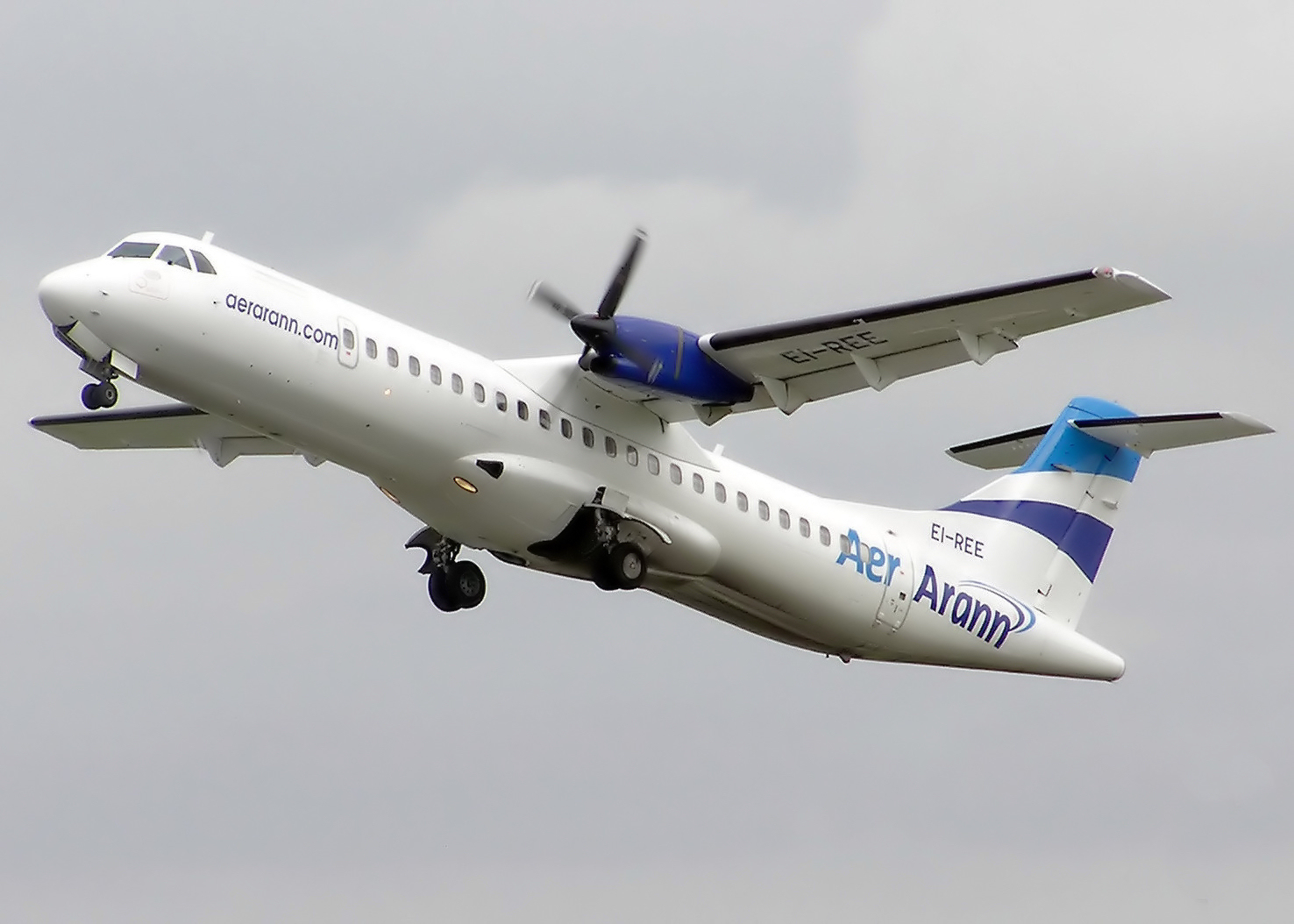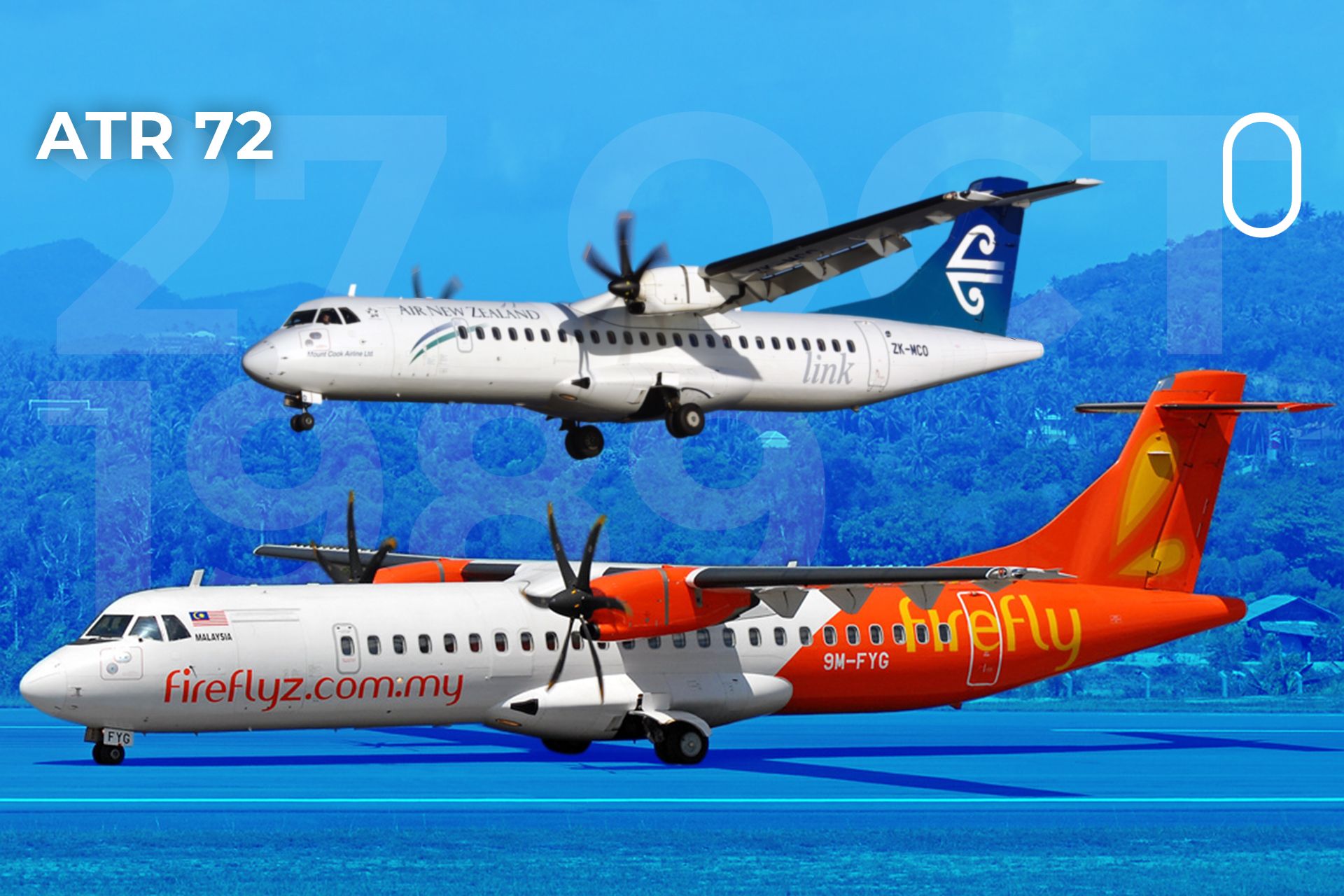ATR 72 Aircraft Overview: Atr 72 Plane

The ATR 72 is a popular regional turboprop aircraft known for its versatility and efficiency. It is a twin-engine, high-wing aircraft designed for short-haul regional routes, often connecting smaller cities and towns to major hubs. The ATR 72 has become a staple in the regional aviation industry, offering airlines a cost-effective and reliable solution for connecting communities.
Design and Key Features, Atr 72 plane
The ATR 72 is characterized by its distinctive high-wing configuration, which provides a clear view for passengers and facilitates easier loading and unloading of baggage. It features a spacious cabin with comfortable seating for up to 78 passengers in a single-class configuration, and its twin turboprop engines provide efficient power for short-haul operations. The aircraft is known for its quiet cabin, making it a comfortable choice for passengers.
History and Development
The ATR 72’s roots can be traced back to the collaboration between Aérospatiale (now Airbus) and Alenia Aermacchi (now Leonardo). The first ATR 72 prototype, designated as the ATR 42-500, took its maiden flight on October 16, 1988. The aircraft entered service with Air Littoral in February 1989, marking the beginning of a successful journey in the regional aviation market.
Variants
The ATR 72 has evolved over the years, with several variants developed to meet the evolving needs of airlines.
ATR 72-200
The ATR 72-200 was the initial production variant, featuring a maximum takeoff weight (MTOW) of 19,000 kg and a seating capacity of up to 74 passengers. It was powered by Pratt & Whitney Canada PW127F turboprop engines.
ATR 72-500
The ATR 72-500 was introduced in 2003, featuring a more powerful engine and several aerodynamic improvements. The aircraft had an increased MTOW of 21,000 kg, allowing for a greater payload and longer range. It also boasted an improved cockpit with a glass-panel instrument system.
ATR 72-600
The ATR 72-600, launched in 2010, is the current production model. It features a further increase in MTOW to 23,000 kg, a more powerful engine, and a redesigned cabin with enhanced passenger comfort. The aircraft also incorporates advanced avionics and safety features, including a full authority digital engine control (FADEC) system.
ATR 72 Performance and Safety

The ATR 72, a popular regional turboprop aircraft, boasts a compelling blend of performance and safety features, making it a reliable choice for airlines and operators worldwide. This section delves into the aircraft’s performance characteristics, including its maximum takeoff weight, cruising speed, and range, and examines its safety record, highlighting notable incidents or accidents. Furthermore, it compares the ATR 72’s safety features and performance with other regional aircraft in its class.
Performance Characteristics
The ATR 72’s performance is characterized by its efficient fuel consumption, short takeoff and landing capabilities, and ability to operate from unpaved runways. These attributes make it suitable for a wide range of operations, including regional routes, commuter services, and cargo transport.
- Maximum Takeoff Weight: The ATR 72 has a maximum takeoff weight (MTOW) of 23,000 kg (50,706 lb), which allows it to carry a significant payload of passengers and cargo.
- Cruising Speed: The aircraft’s typical cruising speed is around 470 km/h (298 mph) at a cruising altitude of 25,000 feet.
- Range: The ATR 72’s range varies depending on factors such as payload, weather conditions, and route configuration. However, its typical range is approximately 1,500 km (932 miles).
Safety Record
The ATR 72 has a generally good safety record, with a low rate of accidents compared to other aircraft types. However, like any aircraft, it has been involved in a number of incidents and accidents over the years.
- Notable Incidents and Accidents: Some notable incidents involving the ATR 72 include a fatal crash in Taiwan in 2014, a runway excursion in Canada in 2015, and a landing gear collapse in France in 2017. These incidents have led to investigations and safety recommendations aimed at improving the aircraft’s design and operational procedures.
Comparison with Other Regional Aircraft
The ATR 72’s safety features and performance are comparable to other regional aircraft in its class, such as the Bombardier Q400 and the Embraer E170. These aircraft share similar characteristics in terms of passenger capacity, range, and fuel efficiency.
- Safety Features: All three aircraft are equipped with advanced safety features, including flight data recorders (FDRs), cockpit voice recorders (CVRs), and enhanced ground proximity warning systems (GPWS). These features help to mitigate risks and improve safety during flight operations.
- Performance: The ATR 72, Bombardier Q400, and Embraer E170 all offer competitive performance in terms of speed, range, and fuel efficiency. The choice of aircraft often depends on specific operational requirements and airline preferences.
Atr 72 plane – The ATR 72 is a popular regional aircraft known for its versatility and efficiency. While its primary focus is on transporting passengers, its capabilities extend to various other applications. For instance, during the recent abc presidential debate , an ATR 72 was utilized to transport a critical piece of equipment needed for the live broadcast.
The aircraft’s reliability and adaptability made it the perfect choice for this essential mission.
The ATR 72 is a popular choice for regional airlines, known for its versatility and fuel efficiency. One notable example of its use is on flight 2283 brazil , a scenic journey across the breathtaking landscapes of South America.
The ATR 72’s twin turboprop engines provide a smooth and reliable ride, making it a perfect choice for connecting passengers to destinations across the continent.
